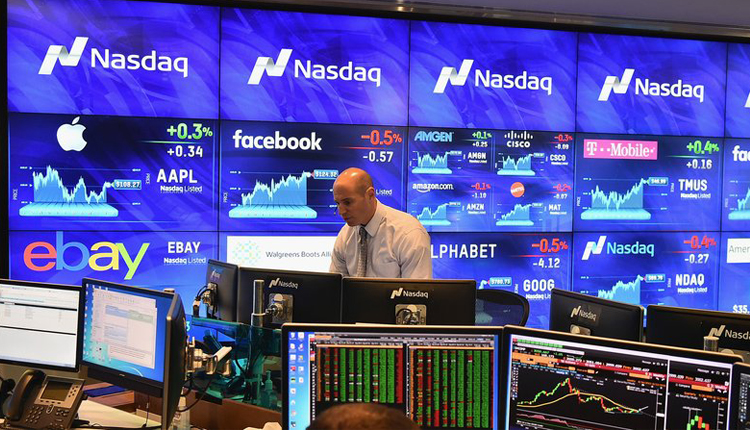U.S. stocks tumbled on Friday as global growth fears and the Federal Reserve’s more cautious economic forecast sparked investor angst into the weekend. Dow Jones Industrial Average sank to its session lows heading into the close and finished down 460.19 points at 25,502.32.
Bank stocks led the decline thanks to a sharp pullback in long-term Treasury yields. The S&P 500 fell 1.9 percent to 2,800.71, its biggest one-day drop since Jan. 3.
The Nasdaq Composite declined 2.5 percent to 7,642.67 as shares of Facebook, Amazon, Netflix, Alphabet and Apple all closed lower.
“There’s a host of worries out there and those worries continue to mount,” said Peter Cardillo, chief market economist at Spartan Capital Securities. “The fear of recession is increasing.”
“As a result, we have a market that is rethinking some of the optimism that was priced in.”
Sending bank stocks lower was an inversion of the so-called yield curve. The spread between the 3-month Treasury bill yield and the 10-year note rate turned negative for the first time since 2007, thus inverting the curve. An inverted yield curve occurs when short-term rates surpass their longer-term counterparts, putting a damper bank lending profits. An inverted curve is also considered a recession indicator.
Citigroup fell more than 4 percent. Goldman Sachs, Morgan Stanley, J.P. Morgan Chase and Bank of America all declined at least 2.9 percent.
Friday’s moves come after Fed surprised investors by adopting a sharp dovish stance on Wednesday, projecting no further interest rate hikes this year and ending its balance sheet roll-off.
Though investors often dislike higher borrowing costs and rate hikes, the motivation for the central bank’s restraint rekindled worries of a GDP growth slowdown. The Fed justified its more temperate outlook by cutting its U.S. economic growth outlook for 2019.
“Maybe one should think about the global economy and not pin everything on the Fed,” Jeffrey Gundlach, CEO of Doubleline Capital, told CNBC’s Scott Wapner. “Except the Fed should operate in consideration of global conditions too.”
Friday saw more weak economic data from around the world that stoked those fears.
IHS Markit said manufacturing activity in Germany dropped to its lowest level in more than six years in March. In France, manufacturing and services slowed down to their lowest levels in three months and two months, respectively.
For the euro zone as a whole, manufacturing fell to its lowest level since April 2013. These data sent the German 10-year bund yield briefly into negative territory, its lowest level since 2016.
“The indicators are stacking up to suggest that this is not a 2021 phenomenon, that we could actually see the possibility of a recession starting maybe later this year,” Liz Ann Sonders, chief investment strategist at Charles Schwab, told CNBC’s “Closing Bell. ”
Nike also weighed on the market throughout Friday’s session. The athletic apparel company’s stock fell 6.6 percent on the back of weak quarterly sales growth in North America. Boeing shares dropped 2.8 percent after Indonesian airline Garuda canceled a $6 billion order for 49 Boeing 737 Max jets.
Despite the decline on Friday, stocks were still up sharply for the year. The S&P 500 and Nasdaq are up 11.7 percent and 15.2 percent, respectively. The Dow, meanwhile, has rallied 9.2 percent.
“Let’s not lose sight of the fact that we’ve had a nice rally over the last couple of weeks,” said JJ Kinahan, chief market strategist at TD Ameritrade. “Today is not a great day, but after a strong week or two you tend to get a bit of a sell-off.”
“Now, should you be cautious? Absolutely, because the slowdown worldwide is something people need to be cautious about.”
Source: CNBC



